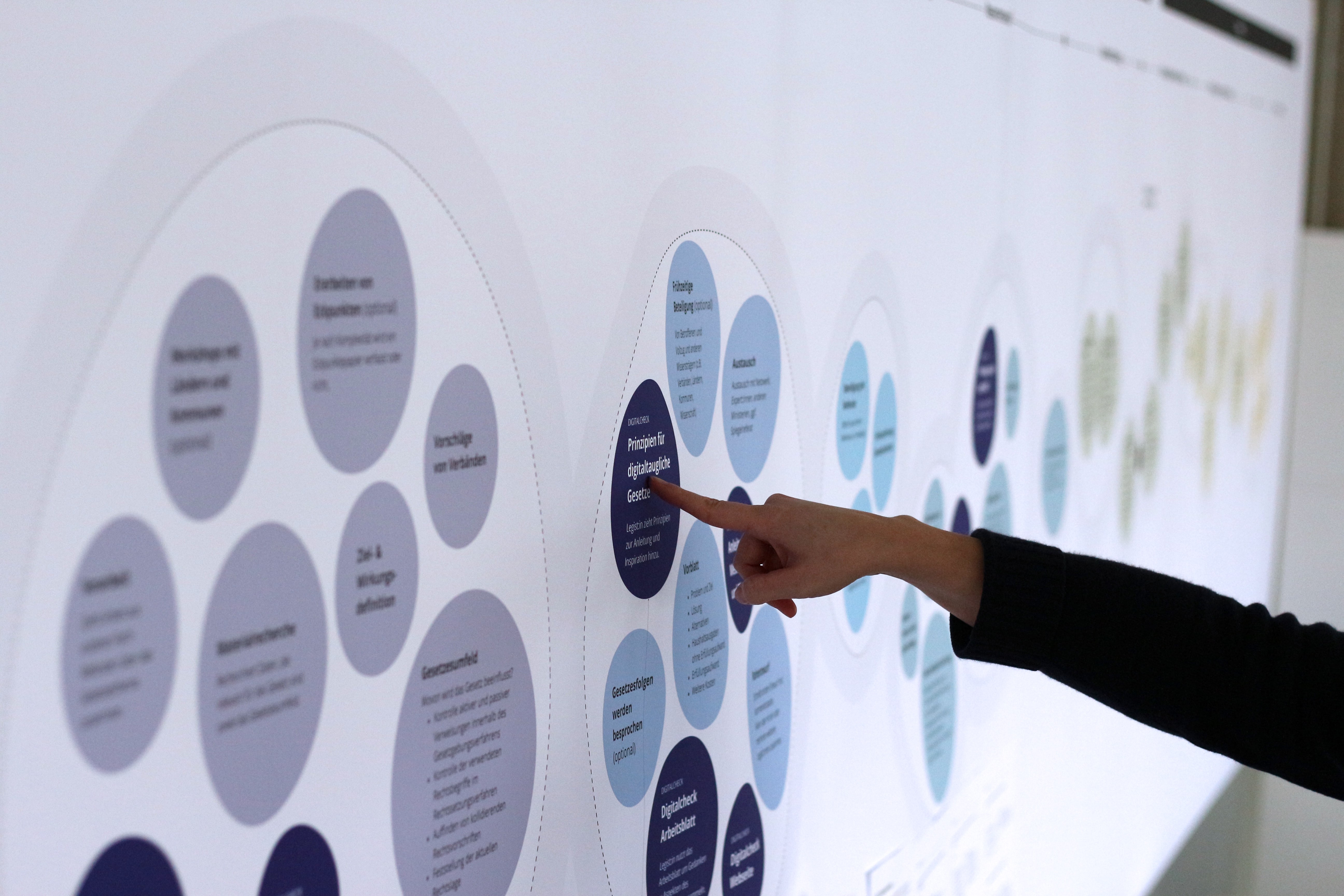
The legislative process in seven meters: Digitalcheck service landscape
About a year ago, we held the first talks with the German Federal Ministry of the Interior and Community on Digitalcheck for digital-ready legislation. Under its lead, we have been developing the Digitalcheck ever since. Looking back on our first steps, the importance of one tool really sticks out: our service landscape for the legislative process in Germany, which we continue to use intensively in our work.
When the DigitalService project team started working on Digitalcheck, it quickly became clear that we needed to deepen our knowledge of how laws are created in Germany. How are laws initiated, who drafts them, and what steps do they go through before they are enacted? We had to understand all this before Digitalcheck could be incorporated into the legislative process.
What is a service landscape?
A service landscape maps a process with all the necessary work steps and participating organizations and shows at a meta level how they relate to each other. This often about services and about creating an overall understanding of the user journey and identifying potential problem areas along the way.
Our service landscape chronologically describes the journey of a lawl – from initiation and research through the various drafting stages to the cabinet draft and, finally, to enactment after the vote in the Bundestag.
The complete service landscape can be found on Flickr. The images in this blog post show individual sections of the extensive visualization.

What have we learned from the Digitalcheck service landscape?
Looking at the service landscape, one thing immediately becomes crystal clear: The development phase of a law is long and extremely complex. Many people with different perspectives and roles are involved in the drafting process. We realized that in order to make a law digital-ready, its possible digitization must be considered from the very outset and integrated into the legislative process.
The first major lever for the later digital-readiness of laws is already located at the front end of the service landscape. The requirements and preconditions for digital implementation need to be taken into account right at the beginning, when the regulatory approach is first designed,. That is why the starting point of the beta version of Digitalcheck lies in the first phase of work: at the research stage.

How do we use our service landscape?
The development of the service landscape has helped us enormously to understand the legislative process. At the same time, it is a wonderful tool for visually communicating the complexity of the issue and the specific starting points of Digitalcheck. That's why we regularly take the service landscape with us to Digitalcheck events, even though in its printed form it is rather bulky at just under seven meters long. Here is our favorite quote from one of the last discussion rounds: "I've only advanced two meters in the legislative process."
The service landscape is also an important aid in the further iterative development of Digitalcheck. When we talk to the legal experts in charge of drafting legislation in the ministries about their experiences with Digitalcheck, for example, we take a look at the service landscape together. As a result are much better able to pinpoint where potential problems may exist or where there may be additional entry points. This is because the service landscape allows us to specifically locate the individual elements and work steps – so we are able to point our finger at an area and say "there?".
If you have any comments or questions about the service landscape, feel free to email us at digitalcheck@digitalservice.bund.de.
For more information on the evolution and content of Digitalcheck, see our previous blog posts "Establishing the foundations for a a digital state through digital-ready legislation" and "Five principles for digital-ready legislation".
If you want to know more about the use of service landscapes: In this article, the UK Government Digital Service describes how a service landscape was used for the judicial system there.


